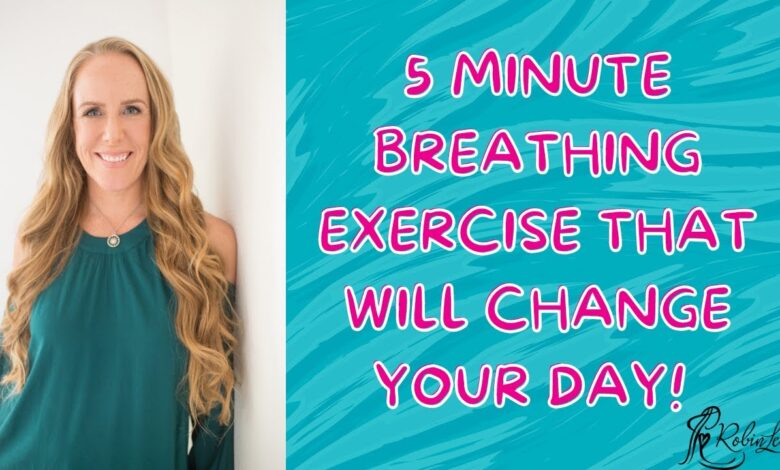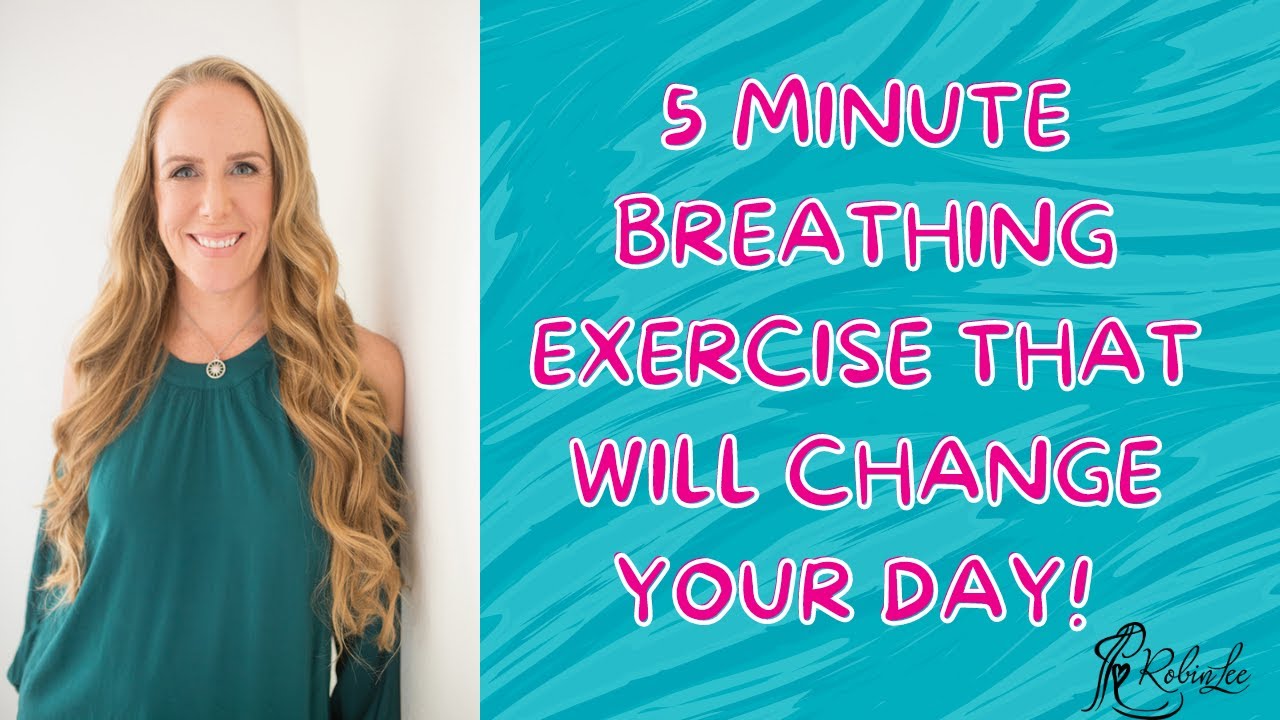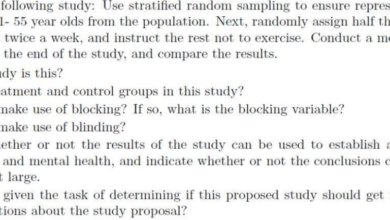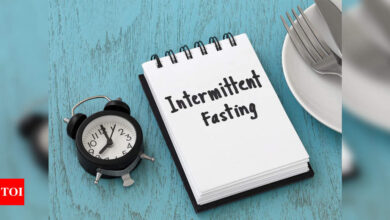
This 5-Minute Breathing Exercise Could Help Lower Your Blood Pressure
This 5 minute breathing exercise could help lower your blood pressure – This 5-minute breathing exercise could help lower your blood pressure, and it’s a simple technique that can be incorporated into your daily routine. High blood pressure is a serious health concern, but there are steps you can take to manage it.
One of these steps is through mindful breathing exercises. These exercises can be incredibly beneficial for your overall health, and they can help you to manage stress, improve your sleep, and even lower your blood pressure.
In this blog post, we’ll explore the link between breathing exercises and blood pressure, learn a simple 5-minute exercise, and discover how to integrate it into your daily life.
Understanding Blood Pressure
Blood pressure is a vital measurement that reflects the force of blood pushing against the walls of your arteries as your heart pumps blood throughout your body. Maintaining healthy blood pressure is crucial for overall health, as it directly impacts the cardiovascular system and other organs.
Systolic and Diastolic Blood Pressure
Blood pressure is typically measured as two numbers, representing systolic and diastolic pressure. Systolic pressure is the pressure in your arteries when your heart beats, while diastolic pressure is the pressure in your arteries when your heart rests between beats.
Systolic pressure is the top number, while diastolic pressure is the bottom number. For example, a blood pressure reading of 120/80 mmHg means that the systolic pressure is 120 mmHg and the diastolic pressure is 80 mmHg.
Factors Contributing to High Blood Pressure
Several factors can contribute to high blood pressure, also known as hypertension. Understanding these factors can help you make informed choices to manage your blood pressure.
- Age:Blood pressure tends to increase with age, as blood vessels become less flexible.
- Family History:Having a family history of hypertension increases your risk.
- Race:Certain racial groups, such as African Americans, have a higher risk of hypertension.
- Lifestyle:Unhealthy lifestyle choices, such as smoking, excessive alcohol consumption, and a diet high in sodium and saturated fats, can contribute to high blood pressure.
- Obesity:Being overweight or obese increases the workload on your heart and blood vessels, leading to higher blood pressure.
- Stress:Chronic stress can elevate your blood pressure.
- Lack of Exercise:Regular physical activity helps lower blood pressure.
- Certain Medical Conditions:Conditions such as kidney disease, diabetes, and sleep apnea can also contribute to high blood pressure.
The Benefits of Breathing Exercises: This 5 Minute Breathing Exercise Could Help Lower Your Blood Pressure

Breathing exercises, often referred to as diaphragmatic breathing or deep breathing, are simple yet powerful techniques that can significantly impact your well-being. These exercises involve consciously controlling your breath, allowing you to regulate your body’s natural responses to stress, anxiety, and even physical exertion.
Stress Reduction
Breathing exercises are a cornerstone of stress management techniques. When you’re stressed, your body goes into “fight-or-flight” mode, characterized by rapid breathing, increased heart rate, and heightened muscle tension. Deep breathing helps to counter these effects by activating the parasympathetic nervous system, responsible for the body’s “rest and digest” response.
“Deep, slow breathing helps to activate the parasympathetic nervous system, which is responsible for calming the body down.”
You know how they say stress can really get to you? Well, a simple 5-minute breathing exercise can help lower your blood pressure, which is a huge step towards a calmer, more relaxed you. And if you’re looking for even more ways to chill out, check out this awesome article on 8 quick ways to reduce stress right now.
After you’ve tried a few of those tips, try that 5-minute breathing exercise again and see if you notice a difference in your blood pressure. It might just surprise you!
By slowing down your breath and focusing on your inhales and exhales, you can trigger a relaxation response, reducing feelings of anxiety, worry, and tension. This can be particularly helpful in managing everyday stress, easing pre-performance anxiety, and promoting better sleep.
Impact on the Nervous System
Deep breathing exercises directly influence the autonomic nervous system, which controls involuntary bodily functions like heart rate, breathing, and digestion. This system has two branches: the sympathetic nervous system, responsible for the “fight-or-flight” response, and the parasympathetic nervous system, responsible for the “rest and digest” response.
“Deep breathing can help to shift the balance of the autonomic nervous system from sympathetic dominance to parasympathetic dominance.”
By engaging in deep breathing exercises, you can activate the parasympathetic nervous system, promoting relaxation and calming the body. This shift in nervous system activity can have a profound impact on your overall well-being, contributing to reduced stress, improved sleep, and enhanced emotional regulation.
Taking a few minutes to focus on your breath can be a powerful tool for managing stress and potentially lowering blood pressure. And if you’re looking for some healthy and delicious treats to fuel your relaxation, check out 8 RD approved pumpkin flavored snacks to buy at Trader Joe’s.
These tasty snacks can be a great way to unwind and enjoy a moment of peace while you practice your breathing exercises.
Cardiovascular Health
Breathing exercises can also contribute to improved cardiovascular health. Deep, slow breathing can help to lower blood pressure, reduce heart rate, and improve blood circulation. This is because deep breathing helps to regulate the autonomic nervous system, promoting a more balanced cardiovascular response.
“Deep breathing can help to lower blood pressure by promoting relaxation and reducing the stress hormone cortisol.”
Studies have shown that regular practice of breathing exercises can lead to significant reductions in blood pressure, particularly in individuals with hypertension. Furthermore, deep breathing can help to improve heart rate variability, which is a measure of the heart’s ability to adapt to changes in demand.
This improved variability is associated with better cardiovascular health and a reduced risk of heart disease.
The 5-Minute Breathing Exercise
This simple yet powerful breathing exercise can be done anywhere, anytime, and requires no special equipment. It is a great way to manage stress, lower blood pressure, and promote relaxation.
Taking a few minutes for deep breathing can do wonders for your blood pressure. It’s a simple yet powerful way to calm your mind and body. And while you’re taking care of your well-being, why not also take a look at 5 ways turn last nights leftovers mornings breakfast ?
It’s a great way to reduce food waste and make mornings a little easier. After all, a healthy mind and a balanced diet go hand-in-hand, and that includes finding ways to manage stress and enjoy delicious, affordable meals.
So, take a deep breath, relax, and let’s get creative with our leftover ingredients!
Steps for the 5-Minute Breathing Exercise
This exercise involves a specific breathing pattern that helps to slow your heart rate and calm your nervous system.
- Find a comfortable seated position. Your back should be straight, but not rigid, and your shoulders relaxed. This posture allows for optimal breathing.
- Close your eyes gently and focus on your breath. Pay attention to the natural rhythm of your breath as you inhale and exhale.
- Inhale slowly and deeply through your nose, counting to four as you fill your lungs with air. Imagine your breath filling your abdomen first, then your chest.
- Hold your breath for a count of four. This brief pause helps to regulate your breathing rhythm.
- Exhale slowly through your mouth, counting to four as you release the air from your lungs. Visualize the air leaving your body with each exhale.
- Repeat steps 3 to 5 for a total of five minutes. This consistent practice allows your body to relax and your blood pressure to stabilize.
Integrating Breathing Exercises into Daily Life
Breathing exercises can be easily integrated into your daily routine. These exercises can be done anywhere, anytime, and they require no special equipment. This makes them a convenient and accessible way to manage stress and improve your health.
Tips for Incorporating Breathing Exercises into Your Daily Routine
Here are some practical tips for incorporating breathing exercises into your daily routine:
- Start small.Begin with just a few minutes each day and gradually increase the duration and frequency of your practice. Consistency is key.
- Choose a time that works for you.Some people find it helpful to practice breathing exercises first thing in the morning, while others prefer to do them before bed or during their lunch break. Experiment to find what works best for you.
- Find a quiet place.You don’t need a special space for breathing exercises, but finding a quiet place can help you focus. If you are at work, try stepping away from your desk for a few minutes.
- Use a reminder.Set a timer on your phone or use a reminder app to help you remember to practice your breathing exercises.
- Make it a habit.Once you’ve established a routine, stick to it as much as possible. This will help you make breathing exercises a regular part of your life.
Challenges and Strategies for Overcoming Them
Here are some potential challenges you might face when trying to incorporate breathing exercises into your daily routine:
- Lack of time.Many people feel they don’t have enough time to add another activity to their already busy schedules. However, even a few minutes of breathing exercises can make a difference. Try to find just 5 minutes each day to practice.
- Lack of motivation.It can be difficult to stay motivated, especially when you’re first starting out. To stay motivated, try setting realistic goals and celebrating your successes. You can also find a friend or family member to practice with, which can help you stay accountable.
- Feeling self-conscious.Some people feel self-conscious about practicing breathing exercises in public. If this is a concern, you can try practicing in private or finding a quiet place to do your exercises. You can also use a breathing app that offers guided meditations.
Real-Life Examples of Individuals Who Have Benefited from Breathing Exercises
- Sarah, a busy mother of two, found that breathing exercises helped her manage stress and anxiety.She started practicing breathing exercises during her commute to work and found that they helped her to calm down and focus. Sarah also found that breathing exercises helped her to sleep better at night.
- John, a high-pressure executive, found that breathing exercises helped him to lower his blood pressure.John was diagnosed with high blood pressure and was concerned about the potential health risks. He started practicing breathing exercises regularly and found that his blood pressure gradually decreased. He also found that breathing exercises helped him to feel more relaxed and focused at work.
- Mary, a college student, found that breathing exercises helped her to improve her concentration and focus.Mary found that she was struggling to concentrate on her studies and was feeling overwhelmed. She started practicing breathing exercises before each study session and found that they helped her to focus and retain information better. She also found that breathing exercises helped her to feel more calm and relaxed.
Importance of Consulting Professionals
Before you embark on any new exercise program, especially one aimed at managing blood pressure, consulting a healthcare professional is crucial. This step is not just a formality; it’s a vital part of ensuring your safety and maximizing the effectiveness of your chosen approach.
The Role of a Doctor in Managing High Blood Pressure, This 5 minute breathing exercise could help lower your blood pressure
A doctor plays a pivotal role in managing high blood pressure. They conduct a thorough assessment of your overall health, including your medical history, current medications, and any pre-existing conditions. This evaluation helps them identify any potential risks associated with exercise and tailor a personalized plan that’s safe and effective for you.
A doctor can help you determine the appropriate intensity, duration, and frequency of exercise that aligns with your individual needs and limitations.
Personalized Advice and Guidance
Consulting a healthcare professional provides you with personalized advice and guidance that’s tailored to your specific circumstances. This includes:
- Identifying the root cause of high blood pressure:Your doctor will investigate potential underlying causes, such as lifestyle factors, genetics, or underlying medical conditions.
- Determining the appropriate exercise type:They will recommend exercises that are suitable for your fitness level and any existing health conditions.
- Setting realistic goals:Your doctor can help you set achievable targets for your blood pressure management journey, preventing discouragement and fostering motivation.
- Monitoring your progress:Regular check-ups with your doctor allow them to monitor your blood pressure levels and make necessary adjustments to your exercise plan.
- Addressing potential complications:Your doctor can address any potential complications that may arise during your exercise program, ensuring your safety and well-being.
Final Conclusion
Remember, everyone’s body is different, and what works for one person may not work for another. It’s essential to consult with a healthcare professional before starting any new exercise program, especially if you have underlying health conditions. Breathing exercises can be a valuable tool in your journey to manage your blood pressure, but they should be considered as part of a comprehensive approach that includes a healthy diet, regular exercise, and stress management.






